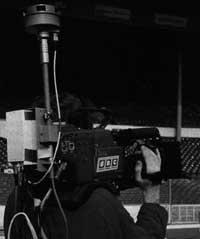Advancement in video cameras
Camera operators will be able to approach events more easily than now thanks to a new radio camera designed by the BBC research department.
In some places where you have to take the images, in many cases it is impossible to carry them with cables. For this reason, radio cameras have long been designed, which transmit images with a microwave antenna. The first radiocámaras emitted signals in all directions, so that the receiver located elsewhere collected these signals, but the metallic parts of the stadiums reflected the signals causing interference. Sometimes these interferences could cause total image loss.

Subsequently, the BBC used circularly polarized signals, varying the direction of polarization over time. In this way, the reflected signal obtained a polarization against the original and could filter through a filter the signals that had modified the polarization (i.e., the reflected signals).
However, in some places and situations there may be insurmountable physical obstacles between the camera and the receiver, and if the receiver does not attend to the reflected signals it is not possible to emit image.
The new radio camera consists of six circular antennas, each of them sixty degrees. Therefore, they occupy altogether three hundred and sixty degrees of the circumference. In a short time between consecutive television images each antenna emits a test signal. The receiver chooses the most powerful signal received and sends a signal to the radio camera, indicating the antenna to use for the next image.
This must be repeated in images. Therefore, twenty-five times per second. All tests performed to date have been positive and this system is already being used.
Buletina
Bidali zure helbide elektronikoa eta jaso asteroko buletina zure sarrera-ontzian











